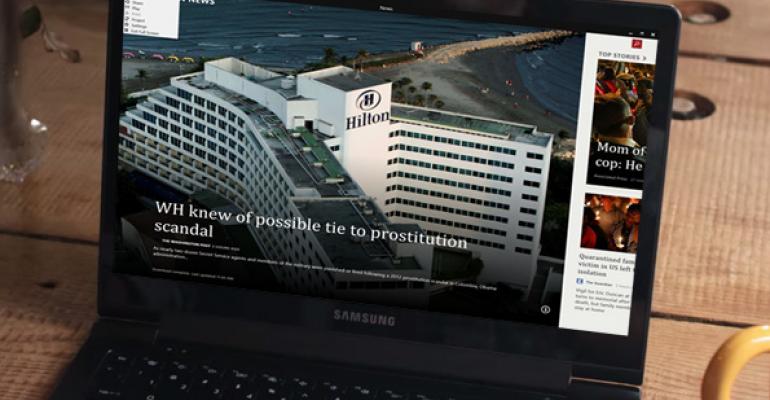With the Windows Technical Preview focused largely on desktop PC use, anyone using Universal apps—formerly called Modern apps—will notice that they now run in windowed form on the desktop. But that's true whether you're using a traditional PC or a tablet or other touch-based device, and it may not always be ideal. Fortunately, you can switch in and out of a true full-screen view at any time.
The way that Universal apps work now in Windows 10 will be useful for traditional PC users who interact with their systems using a mouse and keyboard. That is, they appear on the desktop and support the same minimize and restore/maximize functionality we know and understand from years of desktop application usage.

Likewise, this functionality is exposed in the same way as with desktop applications: Using the Minimize, Restore/Maximize (and Close) window buttons on the far right of the standard Windows title bar that is found on each window.

But you may want to display these windows in a real full screen view, as they are in Windows 8.x. To do so, click or tap the More ("...") title bar button that is found on the left side of the title bar in Universal app windows. When you do, a menu appears.

Now, select Full Screen. The app will display full screen, as it did in Windows 8.x.

To return to normal windowed mode, mouse up to the top edge of the screen to display the title bar, and then click More and then Exit Full Screen (which replaces the Full Screen menu item).

The downsides? There are two.
First, there's no obvious way to exit full screen view on a touch-based system like a tablet: You can't make the title bar appear with touch.
And second, this change isn't permanent. If you display a Universal app in full screen view and then close it, the next time you open that app it will be displayed on the desktop again.
Of course, this is only a preview, and I expect this functionality to be updated for tablet and touch-based users in a future milestone.





